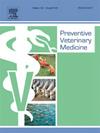“这只是一个皮肉伤口”——了解马、生产动物和混合兽医实践的安全文化
IF 2.2
2区 农林科学
Q1 VETERINARY SCIENCES
引用次数: 0
摘要
兽医行业的非致命工伤率最高,但安全文化仍未得到探索。利用一项调查分发给所有英国员工的兽医实践,本研究旨在描述工作相关伤害的患病率在马,生产动物,和混合兽医实践,并了解受伤人员的行为。共有144名受访者。超过90% %的临床医生在其职业生涯中经历过伤害,而非临床工作人员的这一比例为三分之一。马兽医的受伤主要是腿部或头部的踢伤,通常涉及检查马的远端肢体,大多数没有戴安全帽。生产动物兽医的受伤包括手和脚被压碎,以及腿部被踢伤。受伤经常导致住院(马>; 25% %,生产型动物>; 40% %),但很少有人请假。兽医在受伤后避免请假。原因包括;尽量减少受伤的严重程度,不想“让球队失望”,并感到内疚。许多计划中的行为在受伤后会发生改变,包括使用保护性头饰,提高对周围环境的认识,以及使用更好的约束。由于缺乏意识,接受伤害风险,时间限制以及认为报告没有影响,大多数伤害没有报告。这项研究暴露了大型动物兽医工作场所的一种文化,这种文化使伤害正常化,并低估了安全。缺乏保护措施和尽管受到严重伤害仍继续工作的趋势,突出了迫切需要进行文化和制度变革。改进安全实践、实践领导承诺和全面培训对于解决这一根深蒂固的问题和培养更安全的工作环境至关重要。本文章由计算机程序翻译,如有差异,请以英文原文为准。
‘It’s only a flesh wound’ – Understanding the safety culture in equine, production animal and mixed veterinary practices
The veterinary industry has some of the highest rates of non-fatal work-related injuries, yet safety culture remains unexplored. Utilising a survey distributed to all UK employees of a consolidated group of veterinary practices, this study aimed to describe the prevalence of work-related injuries in equine, production animal, and mixed veterinary practices, and to understand the behaviours of injured persons. There were 144 respondents. Over 90 % of clinicians experienced injury during their careers, versus a third of non-clinical staff. Injuries to equine veterinarians were predominately kicks to the leg or head, and usually involved the examination of a horse’s distal limb, with most not wearing hard hats. Production animal veterinarians’ injuries included crushed hands and feet, and kicks to legs. Injuries often lead to hospital attendance (>25 % equine, >40 % production animal), yet few took time off work. Veterinarians avoided taking time off work after injuries. Reasons included; minimisation of injury severity, not wanting to ‘let the team down’, and feelings of guilt. Many planned behaviour change post-injury, including using protective headwear, increasing awareness of surroundings, and using better restraint. Most injuries went unreported due to lack of awareness, acceptance of injury risk, time constraints, and believing reporting would have no impact. This study exposes a culture in large animal veterinary workplaces that normalises injuries and undervalues safety. The lack of protective measures and the tendency to continue working despite serious injuries, highlight a need for urgent cultural and systemic change. Improved safety practices, practice leadership commitment, and comprehensive training are essential to address this deep-seated issue and fostering a safer work environment.
求助全文
通过发布文献求助,成功后即可免费获取论文全文。
去求助
来源期刊

Preventive veterinary medicine
农林科学-兽医学
CiteScore
5.60
自引率
7.70%
发文量
184
审稿时长
3 months
期刊介绍:
Preventive Veterinary Medicine is one of the leading international resources for scientific reports on animal health programs and preventive veterinary medicine. The journal follows the guidelines for standardizing and strengthening the reporting of biomedical research which are available from the CONSORT, MOOSE, PRISMA, REFLECT, STARD, and STROBE statements. The journal focuses on:
Epidemiology of health events relevant to domestic and wild animals;
Economic impacts of epidemic and endemic animal and zoonotic diseases;
Latest methods and approaches in veterinary epidemiology;
Disease and infection control or eradication measures;
The "One Health" concept and the relationships between veterinary medicine, human health, animal-production systems, and the environment;
Development of new techniques in surveillance systems and diagnosis;
Evaluation and control of diseases in animal populations.
 求助内容:
求助内容: 应助结果提醒方式:
应助结果提醒方式:


